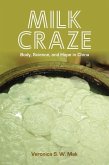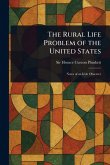In "The Solution of the Milk Problem," George Lloyd Magruder addresses the critical issues surrounding milk production, distribution, and its impact on public health in the early 20th century. This book delves into the challenges of ensuring a safe and reliable milk supply, exploring various factors that contribute to the problem, from unsanitary farming practices to inadequate transportation methods. Magruder offers practical solutions and insights, advocating for improved regulations, better hygiene standards, and more efficient systems for delivering milk to consumers. This work is a valuable resource for understanding the historical context of food safety and the ongoing efforts to safeguard public health through improved agricultural practices. "The Solution of the Milk Problem" remains relevant for those interested in the history of public health, the evolution of the dairy industry, and the enduring quest for safe and nutritious food sources. This work has been selected by scholars as being culturally important, and is part of the knowledge base of civilization as we know it. This work was reproduced from the original artifact, and remains as true to the original work as possible. Therefore, you will see the original copyright references, library stamps (as most of these works have been housed in our most important libraries around the world), and other notations in the work. This work is in the public domain in the United States of America, and possibly other nations. Within the United States, you may freely copy and distribute this work, as no entity (individual or corporate) has a copyright on the body of the work. As a reproduction of a historical artifact, this work may contain missing or blurred pages, poor pictures, errant marks, etc. Scholars believe, and we concur, that this work is important enough to be preserved, reproduced, and made generally available to the public. We appreciate your support of the preservation process, and thank you for being an important part of keeping this knowledge alive and relevant.
Bitte wählen Sie Ihr Anliegen aus.
Rechnungen
Retourenschein anfordern
Bestellstatus
Storno








